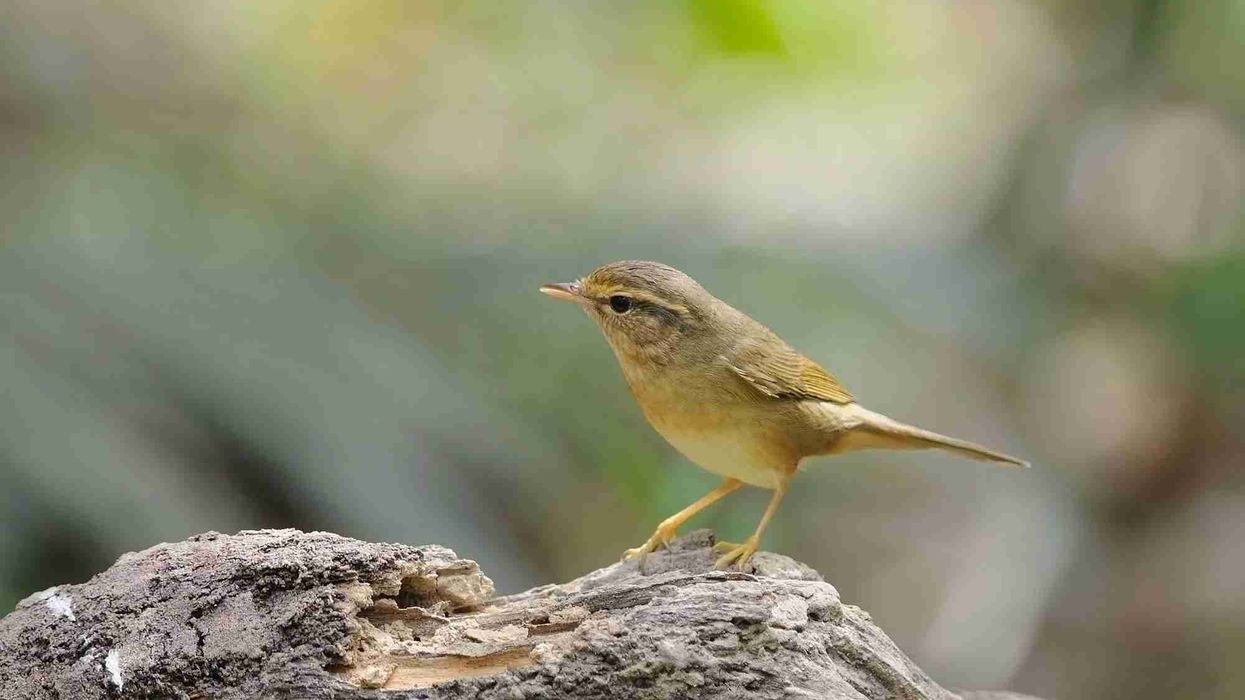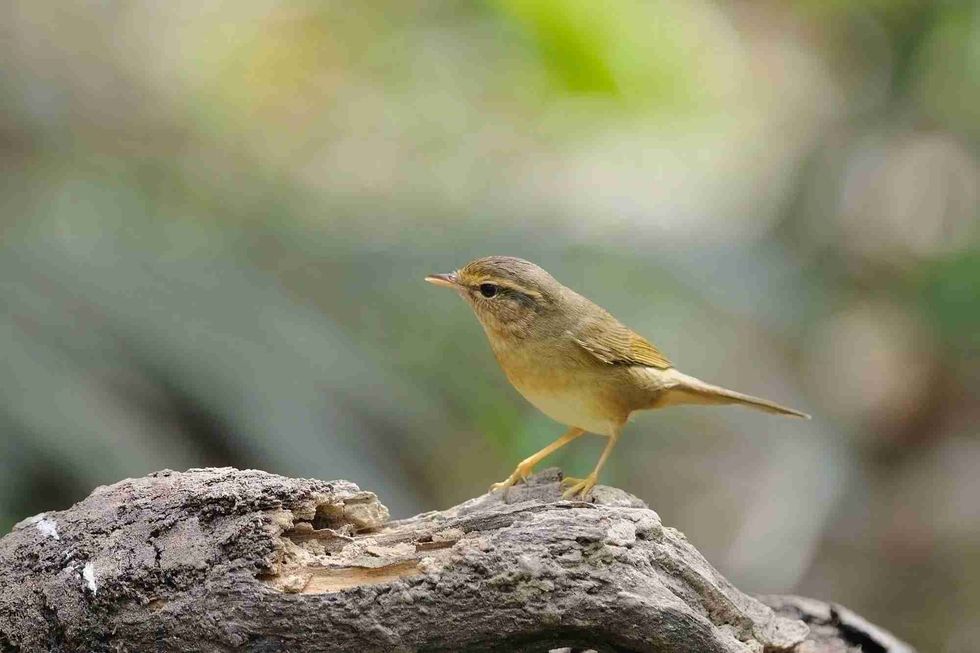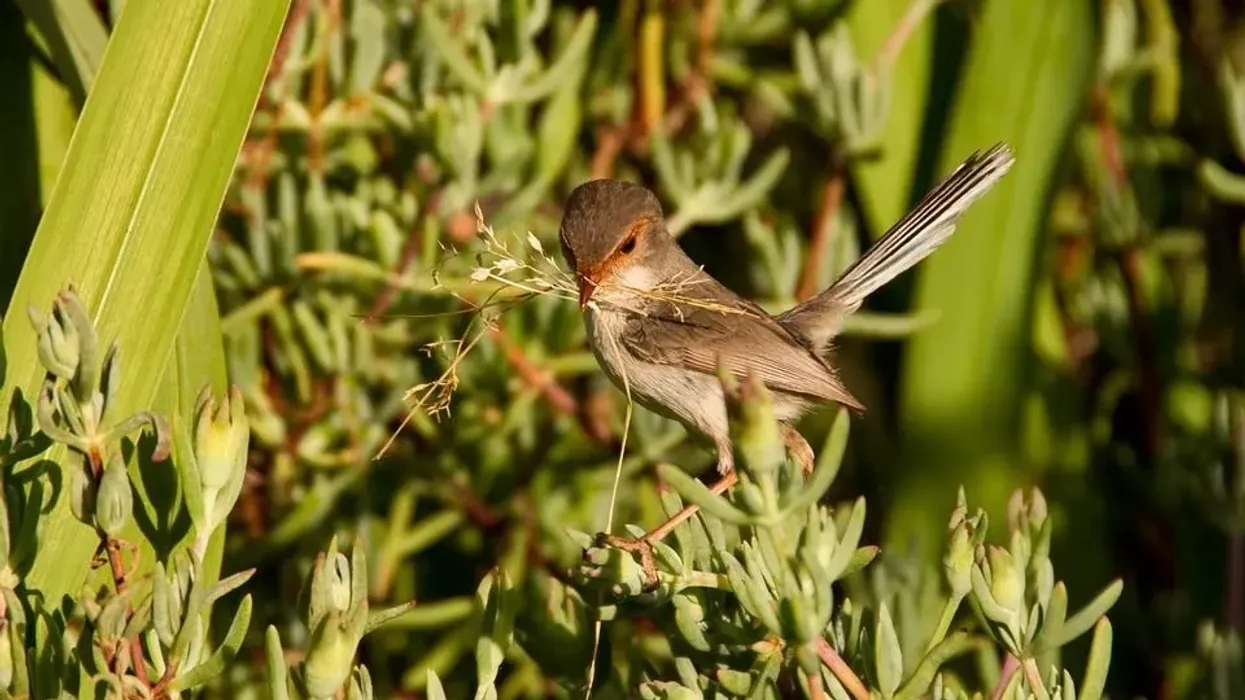The dusky warbler (Phylloscopus fuscatus) is a small brown-colored bird of the Phylloscopidae family. These birds have slender legs which may be reddish-brown in color.
The dusky warbler wings are short and rounded, having different shades of brown and gray feathers. Their eyebrows exhibit white grayish details along with a vague eye ring. These birds of North America and Europe inhabit wetlands, taiga forests, and shrublands.
They exhibit an extraordinary range, predominantly seen in several parts of Asia and Europe but also spotted in parts of Alaska and California during migration. The dusky warbler wingspan is about 6.7-7.1 in (17-18 cm).
These birds are extremely vagrant capable of traveling long distances. They produce high-pitched shrill calls and continuously flicker their wings while searching for food.
These birds feed on small insects, mollusks, and seeds of berries and fruits as well. They are reticent in their behavior and stick to the grounds, busy in search of their prey. The dusky warbler identification is carried out by their distinctive white-colored long eyebrow.
If you like reading this article, then do check out the Elfin Woods warbler and Dartford warbler.
Dusky Warbler Interesting Facts
What type of animal is a dusky warbler?
The dusky warbler is a migratory bird of the Phylloscopidae family.
What class of animal does a dusky warbler belong to?
The dusky warbler (Phylloscopus fuscatus) belongs to the class Aves of the Phylloscopidae family, genus Phylloscopus.
How many dusky warblers are there in the world?
There are three species of dusky warbler birds known in the world. The scientific names of these subspecies are Phylloscopus fuscatus fuscatus, Phylloscopus fuscatus robustus, and Phylloscopus fuscatus weigoldi.
Where does a dusky warbler live?
Dusky warbler species inhabit Asia, particularly China, India, Nepal, and other countries. Their habitat range stretches from Asia to Europe.
They are also spotted in parts of North America like Alaska and California owing to their vagrant life. During their breeding season, these birds migrate from Siberia through Mongolia and settle in Xizang and other parts of South China.
They flock in abundance in North-Eastern parts of India near the foothill region of the Himalayas and in Nepal. Overall, these birds are quite global as a result of their roving nature.
What is a dusky warbler's habitat?
The population of the dusky warbler is mostly spotted in wetlands, taiga forests, and shrublands. These birds also reside in mountain thickets and wet meadows. They prefer low and dense vegetations alongside streams and marshy river valleys during their breeding season.
Who does a dusky warbler live with?
The dusky warbler bird is solitary and is seldom seen in small groups during the migration period.
How long does a dusky warbler live?
Not much scientific data is available about the lifespan of a dusky warbler. Although, the birds belonging to the Phylloscopidae family are known to have a lifespan of about one to five years, which is slightly longer than the willow warblers.
How do they reproduce?
The dusky warbler species reproduce by laying eggs. This species lay an average of about four to six eggs. Their breeding period takes place in the months of May and August. The bird will build its nests in low bushes. The incubation period lasts for about 11-13 days. Their breeding period lasts for only a single season.
What is their conservation status?
The International Union for Conservation of Nature or IUCN Red List has listed the dark warbler bird (Phylloscopus fuscata) as a species of Least Concern. Even so, these birds suffer from habitat loss due to the destructive activities of humans. Hence, the conservation of these birds of North America, Europe, and Asia is necessary.
Dusky Warbler Fun Facts
What does the dusky warbler look like?
These birds share similarities with chiffchaffs. However, they can be differentiated by the pointed bill and the whitish eyebrow. These birds are dark brown in color with characteristic white and gray details that are present on the upper parts of their body and around their eyes.
How cute are they?
The dusky warbler (Phylloscopus fuscatus) can be called cute due to its small body and rounded wings. Although, these birds are not as colorful as the other birds of their family, genus. Even other warbler birds like the Blackburnian warbler or the cerulean warbler are more colorful.
How do they communicate?
This bird species communicates with their shrill high pitched monotonous calls. Their call sounds vary in degrees of emphasis. The dusky warbler alarms other birds of any prevailing danger. The dusky warbler song is also quite popular during the mid-August season. This sounds like monotonous whistles and chirps.
How big is a dusky warbler?
The dusky warbler is about 4.33-4.72 in (11-12 cm) in length. They are slightly bigger than the Smoky warbler (Phylloscopus fuligiventer) and have a similar size as that of the palm warbler.
How fast can a dusky warbler fly?
Although their exact speed is not yet recorded, these birds can fly to great extents during their migration period and can reach up to several miles in search of food and water.
How much does a dusky warbler weigh?
This bird species weigh about 0.0187-0.0297 lb (0.0085-0.0135 kg).
What are the male and female names of the species?
Dusky warblers are commonly referred to as male and female birds.
What would you call a baby dusky warbler?
A baby dusky warbler can be called a chick.
What do they eat?
This species of birds feed on small insects, mollusks, and seeds of berries and other fruits.
Are they dangerous?
The dusky warblers are not considered to be dangerous. They do not impose any threat to humans.
Would they make a good pet?
Though in terms of their size and other details they appear to be quite exotic pets, other species of the Phylloscopidae family are considered to be much more popular due to their range of colorful bodies and pretty little details on their head and tail.
However, these birds cannot make good pets as they are extremely vagrant in nature and not endemic.
They tend to fly off to long distances from their normal range.
Did you know...
The warblers native to Africa, Asia, and Europe are collectively referred to as Old World warblers, and those native to North America and other nearby islands are referred to as New World warblers. More than 100 subspecies of New World warblers are known, and about 500 species are identified from the Old World.
A third subgroup called the Australasian warblers is formed that comprises more than 60 species. This group is further subdivided into two families. The Weebill, belonging to this group, is Australia's smallest bird.
The warblers are, therefore, not rare and are found in abundance. They are given a variety of collective terms, for example, a bouquet, a fall, a confusion of warblers, and many more.
Why are warblers called warblers?
The word warbler means singer. These birds resemble their distant relatives, the Old World warblers in size and shape. They can sing in a continuous tone that appears to be somewhat monotonous with trills. This ability is similar to the Old World warblers or other Passeriformes.
How can you tell warblers apart?
It is considered to be quite difficult to identify these birds because of their small size and appearance. However, the subspecies can be identified by carefully observing the color patterns on their body and the plumage patterns.
Here at Kidadl, we have carefully created lots of interesting family-friendly animal facts for everyone to discover! Learn more about some other birds from our Eleanora cockatoo facts and English trumpeter pigeon facts pages.
You can even occupy yourself at home by coloring in one of our free printable woman and bird coloring pages.
Second image by Savithri Singh.










